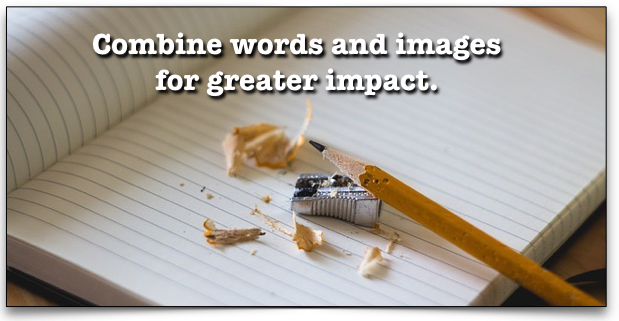The Anatomy of a Content Marketing Post
Hang onto your hats.
We’re going to cover a lot of critical content marketing information in very few words. Each of my points could each be a lengthy post, but for today’s exercise, you need the big picture.
It will help you see where you’re dropping the ball.
Format of a Great Content Marketing Post
Here is a simple rule for how your informative content marketing article should be organized:
- Tell readers what you’re going to say.
- Say it.
- Tell readers what you said.
Repetition is the greatest teacher and for content marketing posts – and any other informational writing – it’s the greatest organizational approach to take.
Headline of a Great Content Marketing Post
Ideally, three elements will come together in your headline:
- Introduce the topic
- Stir emotion
- Arouse curiosity
Further, a great headline will include keywords that make it search engine friendly and the whole thing will come in at 55 characters or less so it will display well on Google. Writing a headline that meets all of these guidelines is a difficult task. Try to hit as many as possible without turning your headline into Frankenstein’s monster.
Your Lead Must Grab Readers
You only get one chance to make a first impression, so be sure your opening paragraph has some kind of “hook.” It also has to be an honest introduction to what you want to tell your readers.
Tip: After you have written your post, come back to your opening paragraph and edit it. Try to cut out some words. Tighten it up.

Body of Your Post
Now we’re getting into the meat and potatoes of your content marketing post. Let the information you want to share determine the length of your post. If it can be said in 300 words, so be it. If it requires 3,000 words, that’s fine too. Just don’t stretch out a 300-word post to 3,000 words because you read some place that longer posts get more social media shares!
See yourself as taking your readers by the hand and leading them on a journey. The body of your post needs to be well organized. Write in very short paragraphs and use plenty of subheads. Will visitors who “scan” be able to get your big ideas, or at least understand the direction you’re going in?
Always be thinking “engagement.” Keep things personal. Use “you” and “I” so you’re talking directly to your reader.
Graphics in Your Post
You should mix graphics with your words. Images engage an area in your readers’ brains that words can’t reach. Further, if there are concepts that you’re teaching in your posts, some people are more visual learners than verbal learners. Graphics will help.
If you can combine words with graphics, it’s even better. That way you’re engaging readers on two levels when they scan your graphics.

Ending Your Posts
As I said at the top, you should end your post with essentially a restatement of the main points or purpose of the post. You might include some kind of challenge here, whether it’s a call to action or a personal improvement challenge.
Tip: Never – and I mean never – give your ending the subhead “Conclusion.” It’s at the end of your post, for crying out loud, so readers know it’s the conclusion.
Tip related to the previous tip: Understand that you are not writing for your high school English teacher when you write a post for digital marketing purposes. Believe it or not, many of the rules you learned in middle school and high school are wrong.
Where are you Screwing up?
I’ve just walked you through the non-negotiable points of writing a good piece of content for your online marketing program. Can you pinpoint the areas where you need to improve? If you can, you’ve taken the first steps at what should be a very profitable digital marketing journey.
